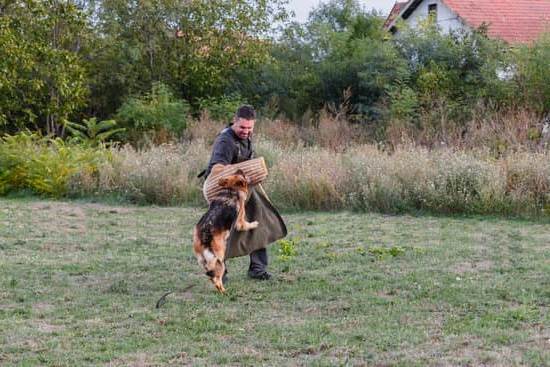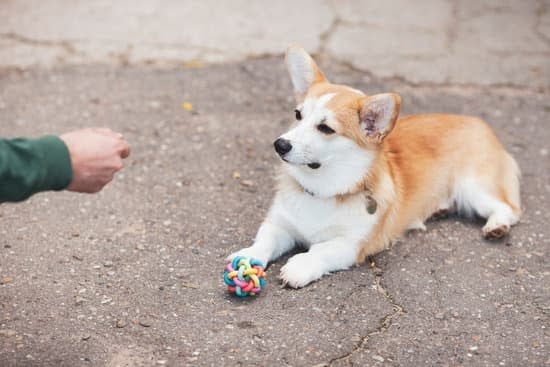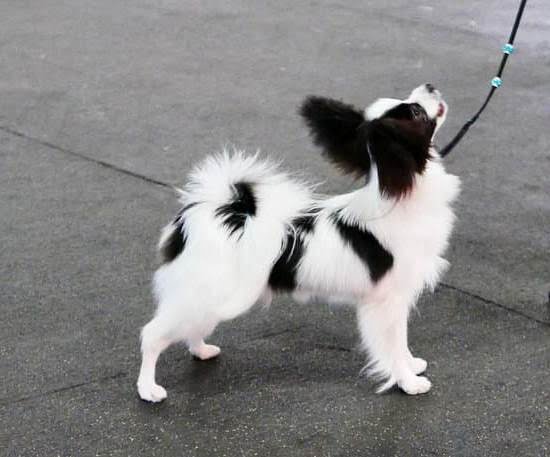Training your dog to rollover is a fun and engaging activity that can also provide mental stimulation and strengthen the bond between you and your furry friend. Understanding and practicing the rollover command can also benefit your dog’s obedience and overall behavioral development. In this article, we will guide you through the process of teaching your dog how to rollover effectively.
Before delving into the step-by-step guide on teaching your dog to rollover, it is essential to understand the behavior and body language of dogs. By recognizing cues such as tail wagging, ear position, and vocalizations, you can better communicate with your pet during training sessions. Additionally, choosing the right training environment for rollover, free from distractions and conducive to learning, is crucial for successful training outcomes.
When embarking on the journey of rollover training for your dog, it is important to prepare treats and rewards that will motivate them during sessions. Positive reinforcement techniques are highly effective in encouraging desired behaviors. By following a structured approach outlined in this article, you can gradually progress from teaching the basic “down” command to mastering the roll over maneuver. Stay tuned for valuable insights on troubleshooting common challenges in rollover training and celebrating successes along the way.
Understanding the Behavior and Body Language of Dogs
Dogs communicate primarily through body language, making it essential for pet owners to be able to understand and interpret their behavior. When it comes to training your dog to rollover, having a good grasp of their cues can greatly aid in the process. Here are some key points to keep in mind when training your furry friend:
- Pay attention to your dog’s tail: A wagging tail can indicate excitement or happiness, while a tucked tail may signal fear or anxiety. Understanding your dog’s tail movements can help you gauge their emotions during training.
- Watch for ear position: Dogs often move their ears depending on their mood. Pricked ears may suggest alertness, while flattened ears could mean submission or fear. Recognizing these cues can help you adjust your training techniques accordingly.
- Body posture matters: A relaxed and loose body posture indicates comfort and ease, whereas stiffness and tension may signify stress or discomfort. By observing your dog’s body language, you can ensure that they are receptive to learning new commands like rollover.
By familiarizing yourself with how dogs communicate through behavior and body language, you can establish a strong foundation for effective training sessions. Remember that every dog is unique, so take the time to observe and understand your pet’s individual signals during the training process on how to train your dog to rollover.
Choosing the Right Training Environment for Rollover
Creating a Safe and Distraction-Free Space
When it comes to training your dog to rollover, choosing the right environment is crucial for success. It’s important to pick a space that is safe and free of distractions. Find a quiet room in your home where you can easily focus on training without interruptions. Make sure the area is spacious enough for your dog to move around comfortably while also being free from potential hazards.
Utilizing Outdoor Spaces for Training
If you prefer to train your dog outdoors, make sure to choose a location that is secure and enclosed, such as a fenced backyard or a quiet park away from busy roads. Outdoor spaces can provide additional stimuli for your dog to focus on, which can be both beneficial and challenging during training sessions. Take advantage of different environments to help your dog generalize the rollover command in various settings.
Adapting to Different Environments
As you progress in training your dog to rollover, it’s essential to introduce the command in various environments to ensure that your furry friend can perform the behavior regardless of the circumstances. Start with familiar surroundings and gradually add distractions like other people or animals to test their responsiveness. By practicing in different environments, you’ll help your dog generalize the rollover command and strengthen their obedience skills overall.
Preparing Treats and Rewards for Training Sessions
When it comes to training your dog to rollover, having the right treats and rewards can make a significant difference in the effectiveness of your training sessions. Dogs respond well to positive reinforcement, so using tasty treats as a reward can help motivate them to learn new commands like rollover. It’s essential to choose treats that your dog finds highly desirable and is willing to work for during training.
One effective approach is using small, soft treats that are easy for your dog to eat quickly. This allows for seamless training without long pauses for chewing. Additionally, breaking up treats into smaller pieces can help stretch out the rewards throughout the training session without overfeeding your furry friend. Remember that consistency is key in training, so it’s important to use the same type of treat each time you practice the rollover command with your dog.
In addition to treats, verbal praise and physical affection can also serve as rewarding stimuli for dogs during training. By incorporating a mix of treats, praise, and affection, you can create a positive and engaging learning environment for your pet. This combination of rewards will not only reinforce good behavior but also strengthen the bond between you and your canine companion as you work together on mastering how to train your dog to rollover.
| Treats | Rewards |
|---|---|
| Small, soft treats | Verbal praise |
| Treats broken into smaller pieces | Physical affection |
Step-by-Step Guide on Teaching Your Dog the Down Command
Starting With the Basics
Before you can successfully teach your dog to rollover, it is important to first start with teaching them the “down” command. This fundamental command will lay the groundwork for more advanced tricks like rolling over. To begin, choose a quiet and distraction-free environment to conduct training sessions.
Using Positive Reinforcement
When teaching your dog the “down” command, make sure to use positive reinforcement methods such as treats and verbal praise. Start by holding a treat close to your dog’s nose and then slowly lower it to the ground. As your dog follows the treat with their nose, gently slide it out of reach so that they have to lie down to continue following it.
Practice Makes Perfect
Consistency is key when training your dog to understand the “down” command. Practice this exercise multiple times throughout the day in short, 5-10 minute sessions. Remember to always end on a positive note and reward your dog for their efforts. Once your dog has mastered the “down” command, you can then progress to teaching them how to rollover using similar positive reinforcement techniques.
Progressing to Teaching the Roll Over Command
Training your dog to rollover is not only a fun trick to show off, but it can also be a great bonding experience between you and your furry friend. Once your dog has mastered the basic “down” command, you can start progressing to teaching them how to rollover. Here are some steps on how to train your dog to rollover:
1. Master the “Down” Command: Before moving on to teaching the rollover command, make sure your dog is comfortable and consistent with the “down” position. Use treats and positive reinforcement to get them in the down position reliably.
2. Introduce the Roll Over Motion: Start by getting your dog in the down position. Hold a treat near their nose and then slowly move it towards their shoulder. This movement should encourage them to roll onto their side. Reward them when they make any attempt at rolling over.
3. Break It Down into Steps: If your dog is struggling with the full rollover motion, break it down into smaller steps. For example, you can first work on getting them to turn their head or lift a paw while in the down position before attempting the full roll.
Remember that patience is key when training your dog to rollover. Celebrate small successes and continue practicing regularly with short training sessions to keep them engaged and motivated. With time and consistency, your pup will eventually master this impressive trick.
Troubleshooting Common Challenges in Rollover Training
Training your dog to rollover can be a fun and rewarding experience, but it’s not always smooth sailing. Some dogs may face challenges during the training process that can make learning this trick a bit more difficult. One common issue is when your dog gets stuck at a certain point in the rollover motion and can’t complete the full rotation. This could be due to physical limitations, lack of coordination, or fear of being in an unfamiliar position.
To address this challenge, break down the rollover into smaller steps and reward your dog for each successful movement. Start with getting your dog comfortable with lying on their side before attempting the full roll. Use treats and positive reinforcement to encourage them to go further each time until they can complete the entire rollover smoothly. Remember to be patient and understanding throughout this process as every dog learns at their own pace.
Another common challenge in rollover training is when a dog becomes distracted or loses focus during the training session. This can happen if there are other people, pets, or noises in the environment that divert your dog’s attention away from the task at hand. To combat this issue, choose a quiet and familiar training space where there are minimal distractions. Additionally, keep training sessions short and engaging to maintain your dog’s focus and motivation throughout the process.
| Common Challenge | Solution |
|---|---|
| Difficulty completing full rotation | Break down the rollover into smaller steps; use positive reinforcement |
| Losing focus during training | Choose a quiet space; keep sessions short and engaging |
Reinforcing Positive Behavior and Celebrating Successes
One of the most crucial aspects of training your dog to rollover is reinforcing positive behavior and celebrating successes. Dogs respond well to positive reinforcement, so it’s essential to reward them for their progress and achievements during training sessions. By incorporating rewards and celebrations into your training routine, you can motivate your dog to continue learning and mastering the rollover command.
When your dog successfully performs a rollover, make sure to praise them enthusiastically and offer them a tasty treat as a reward. Positive reinforcement helps strengthen the bond between you and your four-legged friend, making the training process more enjoyable for both of you. Additionally, celebrating small victories along the way can boost your dog’s confidence and encourage them to keep trying until they perfect the rollover trick.
In addition to treats and verbal praise, physical affection such as petting or gentle scratches can also be effective rewards for your dog. Some dogs may respond better to touch than food rewards, so it’s essential to figure out what motivates your furry companion the most. By consistently reinforcing positive behavior and celebrating successes during training sessions, you’ll be well on your way to teaching your dog how to rollover effectively.
Taking Training to the Next Level
Training your dog to rollover is not only a fun trick but also a great way to stimulate their minds and strengthen the bond between you. By following a step-by-step guide and being patient, you can successfully teach your furry friend this impressive command.
Understanding your dog’s behavior and body language is key to effective communication during training sessions. It is important to create a positive training environment that is free from distractions and allows your dog to focus on learning.
Once your dog has mastered the basics of rolling over, it’s time to take their training to the next level by adding distractions and improving their performance. Introducing distractions such as other people, dogs, or noises will test your dog’s ability to stay focused on the command despite outside influences. Start with small distractions and gradually increase the difficulty level as your dog becomes more proficient at rollover.
To reinforce positive behavior and celebrate successes during training, make sure to use plenty of treats and rewards. Positive reinforcement will encourage your dog to continue learning and performing well. Remember that every dog learns at their own pace, so be patient and consistent in your training efforts. With dedication and perseverance, you can teach your furry companion how to rollover like a pro.
Frequently Asked Questions
How Do You Teach a Dog to Roll Over?
Teaching a dog to roll over can be a fun and rewarding experience for both you and your furry friend. The key is to start with basic commands like “sit” and “down” to establish a foundation.
Once your dog is comfortable with these commands, you can start incorporating the rolling motion by using a treat as a lure. With patience, consistency, and positive reinforcement, your dog will eventually learn to roll over on command.
What Age Can You Teach a Dog to Roll Over?
The age at which you can teach a dog to roll over largely depends on the individual dog’s personality, intelligence, and training history. In general, it’s best to start teaching this trick when the dog is still young and in its prime learning stages.
Puppies are usually more receptive to new commands and tricks, so starting early can increase the chances of success. However, older dogs can also learn new tricks with patience and persistence.
What Is the Hardest Trick to Teach Your Dog?
The hardest trick to teach your dog can vary depending on the breed, personality, and individual characteristics of your pet. Some dogs may struggle more with complex tricks like ringing a bell or putting toys away, while others may find simple commands challenging.
Generally speaking, tricks that require multiple steps or precise movements tend to be more difficult for dogs to master. It ultimately comes down to understanding your dog’s abilities and adjusting your training strategy accordingly.

Welcome to the blog! I am a professional dog trainer and have been working with dogs for many years. In this blog, I will be discussing various topics related to dog training, including tips, tricks, and advice. I hope you find this information helpful and informative. Thanks for reading!





